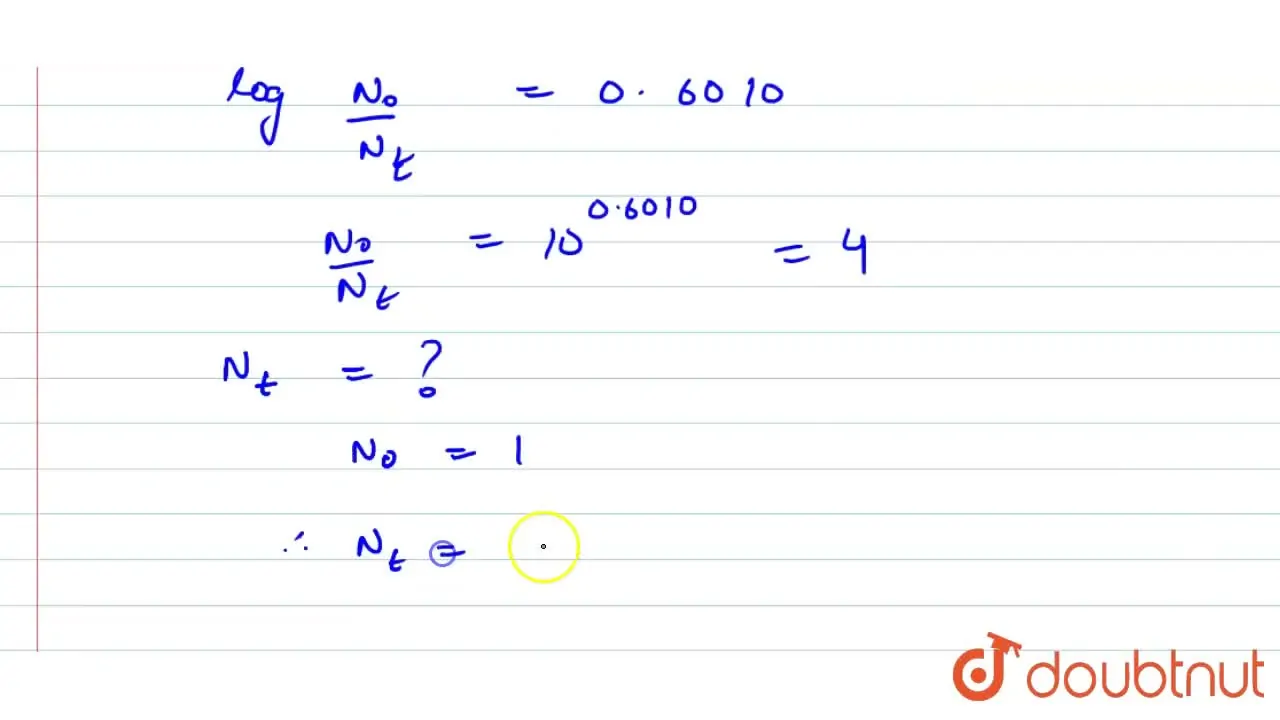Radioactive decay is a first− order process. Radioactive carbon in wood sample decays with a half− life of 5770 years. What is the rate constant ( in years ) for the decay ? What fraction would remains after 11540 years ?
a. Given, t1/2=5770year
K=0.693t1/2=0.6935770
=1.2×10−4year−1
b. T=n×t1/2
n=Tt1/2=115405770=2
Now, NN0=(12)n=(12)2=14
Related Playlists
- BOOK - CENGAGE CHEMISTRY ENGLISHCHAPTER - NUCLEAR CHEMISTRYEXERCISE - True//False Type1videos
NUCLEAR CHEMISTRY
- BOOK - CENGAGE CHEMISTRY ENGLISHCHAPTER - NCERT BASED EXERCISEEXERCISE - Nuclear Chemistry (NCERT Exercise)29videos
NCERT BASED EXERCISE
- BOOK - CENGAGE CHEMISTRY ENGLISHCHAPTER - ORGANIC COMPOUNDS WITH FUNCTIONAL GROUPEXERCISE - Archives Analytical And Descriptive24videos
ORGANIC COMPOUNDS WITH FUNCTIONAL GROUP
Similar Questions
Half life of C19 is 5700 years. Find its decay constant
View SolutionTritium has a half life of 12.5 years against beta decay. What fraction of a sample of pure tritium will remain undecayed after 25 years?
View SolutionTritium has a half life of 12.5 years against beta decay. What fraction of a sample of pure tritium will remain undecayed after 25 years?
View SolutionIf the half of an isotope X is 10 years , its decay contant is
View SolutionPlutonium decays with half life of 24000 years. If plutonium is stored for 72000 years, the fraction of it that remains is
View SolutionThe half life of Ra is 1600 years. The fraction of a sample of Ra that would remain after 6400 years is
View SolutionA radioactive material has half-life of 10 days. What fraction of the material would remain after 30 days ?
View SolutionA radio-isotope has a half-life of 5 yeard. The fraction of the atoms of this material that would decay in 15 years will be
View SolutionA free neutron beta-decays to a proton weth a half-life of 14 minutes .(a)What is the decay constant ?(b)Find the energy liberated in the process.
View SolutionThe half-life periof of a radioactive substance is x years. The fraction remaining after 2x years is………….. .
View Solution


